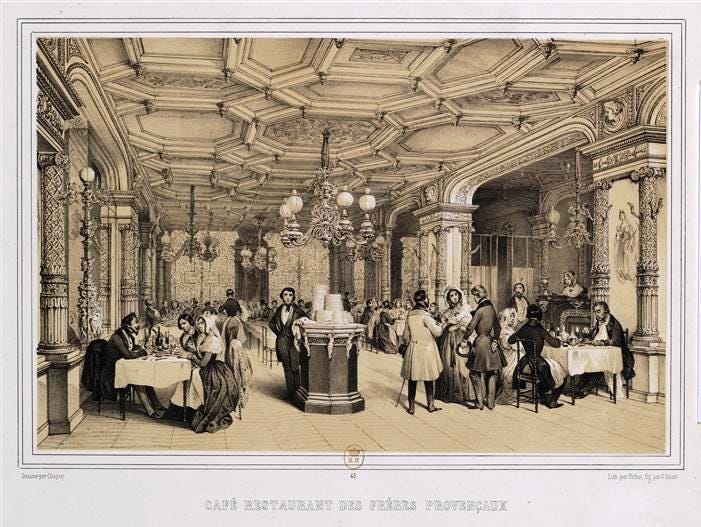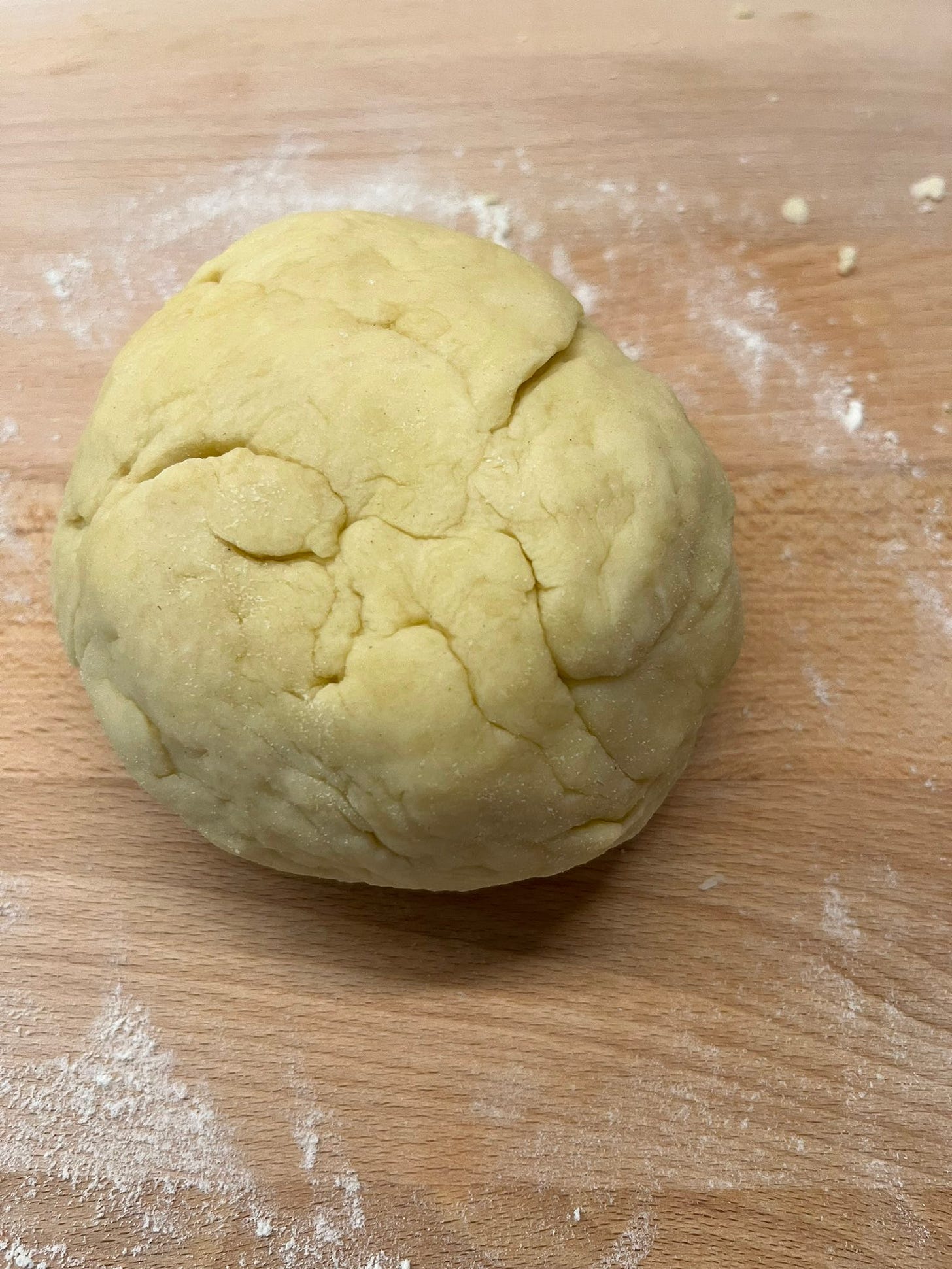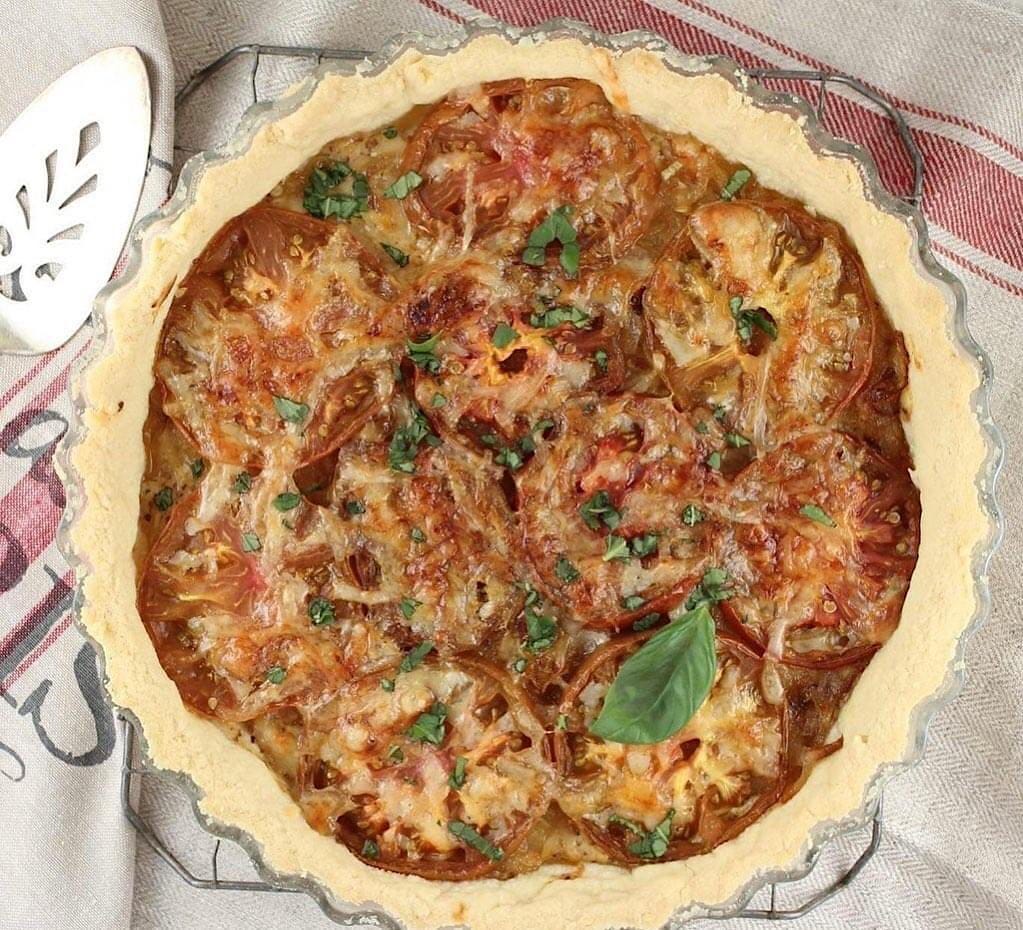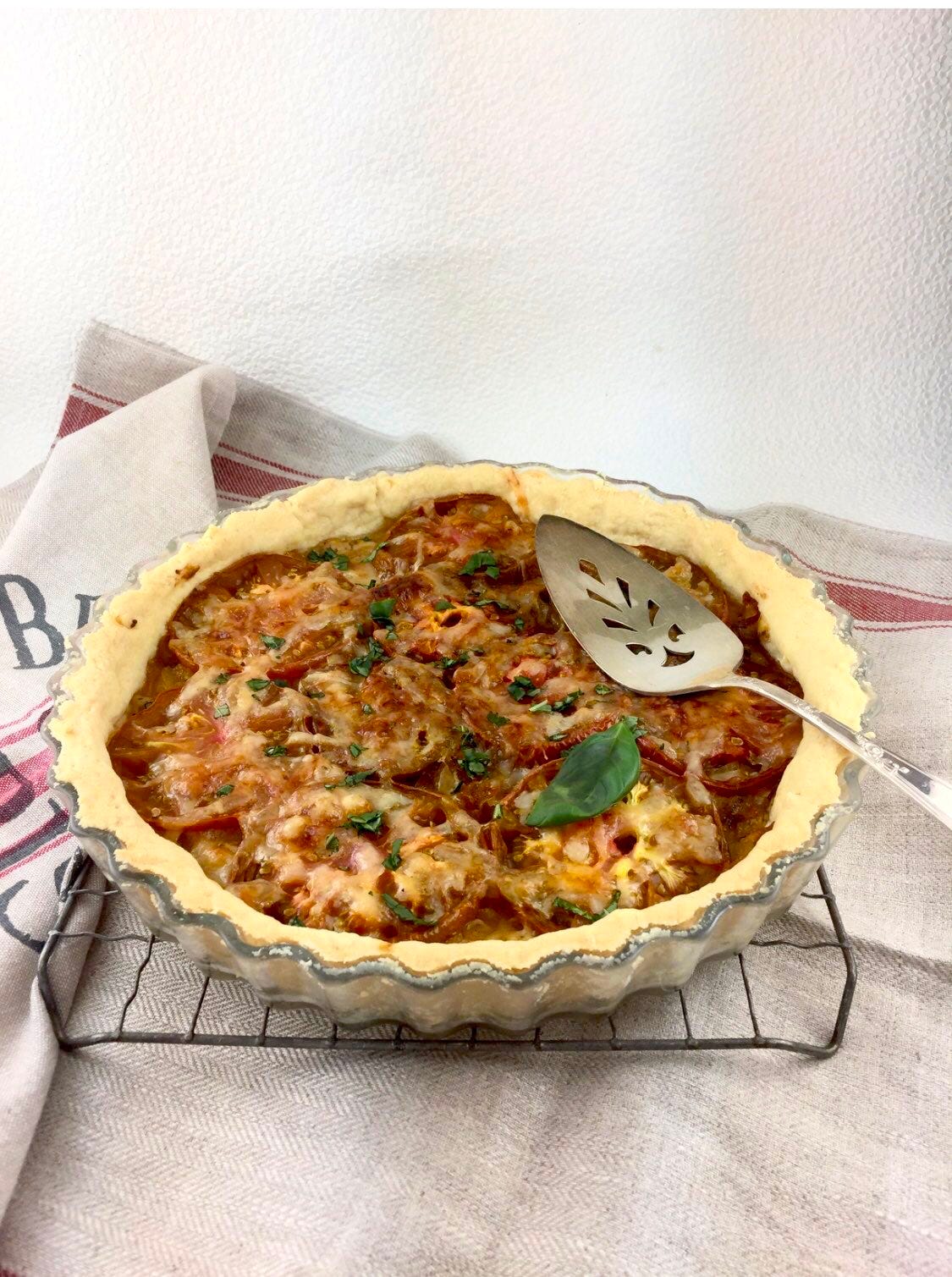Life is so brief that we should not glance either too far backwards or forwards ... therefore study how to fix our happiness in our glass and in our plate. - Grimod de la Reyniere
Tomatoes have such an unusual history, one must admit. Today, they might very well be one of our most common and consumed vegetables - yes, I know, the tomato is a fruit, not a vegetable. But to be honest, we usually use them as we would a vegetable, am I right? Yet, as popular as they are and as much as we use and rely on them practically every day, all year round, both cooked and raw, tomatoes are a fairly recent addition to our culinary repertoire. At least here in France.
The tomato came to France from Mexico via Spain and Naples; “tomate” being the deformation of the Nathuatl Aztec word “tomalt” giving rise to the Spanish “tomate”. The tomato had long been cultivated for use in cooking throughout the indigenous cultures of Mexico and appropriately found its way into the Columbian Exchange (Interchange) - the transfer of plants, animals, precious metals, commodities, technology, and culture (as well as human populations and diseases) - between the Old World and the New in the 15th Century. The Spaniards, although only discovering the tomato in their contact with the Aztecs, understood that this “vegetable fruit” was a valued and useful ingredient in cooking, and so immediately integrated it into their dishes upon bringing it back to Europe.
But not so the French. Or, for that matter, the Italians and northern Europeans, either.
The first attestation of the word “tomate”in French dates to 1598 in the translation of Jose de Acosta’s, a sixteenth-century Spanish Jesuit missionary and naturalist, Historia Natural y Moral de las Indias, written in 1590.
“...they also use tomatoes, which are fresh and healthy and is a kind of juicy thick grains (sic), and make tasty sauce, and by themselves they are good to eat.”
Long considered poisonous, despite Acosta’s assurance of the tomato as being “good to eat”, the French continued to use it strictly as an ornamental plant for the next hundred or so years. Sometime in the middle of the 18th century, the French finally discovered the tomato to be not only edible but a delicious “legume fruit” or vegetable fruit. It immediately became popular and widely used, primarily in the south of Europe along the Mediterranean coastal regions. It slowly made its way north, finally arriving in Paris a couple of decades later. Les Trois Frères Provençaux, a popular dining establishment near the Palais Royal, might have been the first Parisian restaurant to have tomatoes on their menu, the 3 brothers-in-law from Provence who founded the restaurant bringing tomatoes - and the southern dishes of their youth - with them in 1786.
The word “tomate” doesn’t enter into the dictionary of the Académie Francaise until 1835; before this, the tomate had long been referred to as pomme d’amour or pomme d’or (from the italian pomodoro).
“TOMATE: s.f. Plant, a species of nightshade, also known as Pomme d’amour (apple of love), that bears bright red fruit, to which the same name is given, and whose slightly acidic juice serves to make a certain sauce.”
And, as they do, the French seemed to take this instruction to the letter. The rare 19th century cookbooks that contained tomatoes stuck strictly to using them to make tomato sauce, mainly to be served with meats. The early 1806 edition of André Viard’s well-known Le cuisinier impérial, ou L'art de faire la cuisine et la pâtisserie pour toutes les fortunes has a single recipe for a simple sauce tomate française. By 1817, Viard adds sauce tomate indienne (the addition of “piment enragé”, safran d’Inde or curcuma, a little bouillon, and butter to the sauce tomate française using, of course, “pommes d’amour ou tomate”), sauce tomate à la bourgeoise (adding onions, parsley, thyme, cloves, and butter to the sauce tomate française), and sauce tomate à l’italienne (which seems to be just a combination of française, bourgeoise, and indienne) in his updated Le cuisinier royal.
Dictionnaire de Cuisine et d'Économie Ménagère (Dictionary of Cooking and Household Economy) by M. Burnet, ex-officier de Bouche, in 1836, goes further than the Académie Francaise in explaining this fruit. After explaining that the tomato arrived in the Languedoc and Provence regions by way of Spain where it had already been widely cultivated for 20 years, he describes it as being “a beautiful red with a fine pulp, light and succulent, having a very pleasant sharp flavor when the fruit is cooked in bouillon or a ragout/stew”. He extols the excellent sauces one can prepare using the tomato which will accompany any meat, as well as the coulis used in soups and rice dishes. But, M. Brunet, warns, the tomate is used as a seasoning! The fruit itself is bland and if eaten on its own can be harmful… and preserving the tomato in vinegar like pickles is the anecdote to its bad quality.
Well!
La tomate farcie, or stuffed tomato, still an extremely popular home dish in France today, didn’t really take off or begin to be mentioned in cookbooks until the mid-to-late19th century even though Alexandre-Laurent Grimod de La Reynière, lawyer by trade, public gastronome by reputation, wrote about it in 1803 in his Almanach des gourmands ou calendrier nutritif.
He rhapsodizes eloquently and passionately about the tomato (he considers the term “pommes d’amour” an extremely vulgar appellation) as he admits that it was almost entirely unknown in Paris before the Revolution, being carried to the capital by the good folks of the provincial south heading north to make their fortunes, where it quickly became quite popular. He states in no uncertain terms that the tomato was a godsend, being an enormous benefit to sauces, soups, and stews, replacing mustard as a seasoning, and “giving flavor to even the most mediocre dish”. He then gives his recipe for tomatoes stuffed with a seasoned meat or sausage filling. “While this delicacy is new to Paris, the recipe (for tomates farcies) is found in not a single dining establishment (sic)” and would like to claim credit for the introduction of this dish to his “gourmands concitoyens”, his fellow food lovers. According to the menus from several high-end Parisian restaurants he includes in his Almanac, tomatoes are not only being used for sauces, but also being served raw in salads as well as “au gratin” as early as 1803.
By the 1860’s, cookbooks are finally beginning to include recipes for tomates farcies as well as tomates gratinées with garlic and parsley, and tomates (farcies) à la provençale, a meatless version of the stuffed tomato, adding lots of sautéed onions and mushrooms, parsley and garlic to the bread-and-tomato-based filling, throwing in chopped anchovies for the provençale touch.
As for the tarte à la tomate, the tomato tart, so very common in French households today, I am having an unusually difficult time finding any recipe at all for this deceptively simple yet marvelously delicious pastry, an ideal summer lunch, brunch, dinner or picnic main course, in any cookbook at all.
And so here are 2 recipes, one a classic combination of sweet summer tomatoes with mustard and sautéed onions in a plain pastry shell, the other using cherry tomatoes layered on top of a goat cheese filling and baked in a risen yeast crust and seasoned à la provençale. Both tarts, while taking a little time to prep, are both really simple to make, even the yeast dough is easy and fast; and both are delicious eaten warm from the oven, at room temperature, or even reheated gently the next day.
Cherry Tomato Tart
A summery tomato tart with a nod to the Mediterranean coastal regions of France. Cherry tomatoes are pressed into a thin layer of herbed goat cheese on a risen yeast dough (that bakes up really tender), making a light and tasty seasonal main course that’s a cross between a tart and a pizza.
For the dough:
⅔ cups (150 ml) milk
2 ½ teaspoons (8 grams) instant yeast
1 teaspoon white or brown granulated sugar
2 cups + 2 tablespoons (300 grams) flour
½ teaspoon salt
⅓ cup (100 ml) olive oil
For the filling:
Fresh goat cheese or ricotta: 3 ½ ounces (100 grams) for 10-inch/25-cm tart or 5 ounces (150 grams) for a 12-inch/30-cm tart
2 - 4 tablespoons heavy cream or crème fraîche
1 bunch fresh basil
Freshly ground black pepper
cherry tomatoes: 10 ½ ounces (300 grams) for 10-inch/25-cm tart or 17 or 18 ounces (500 grams) for a 12-inch/30-cm tart
Salt and freshly ground black pepper
Olive oil for glazing
Drizzle balsamic reduction (preferred) or balsamic vinegar or liquid honey (or both)
½ to 1 teaspoon each finely ground dried basil and dried thyme
About a dozen small black or violet olives niçoises or Greek olives
Warm the milk to just warmer than body temperature (neither cool, tepid, nor hot). Place the yeast and the sugar in a small bowl then pour the milk over the yeast and sugar and give the bowl one or two swirls just to blend. Allow the yeast to activate until dissolved and foamy about 15 minutes.
Blend the flour and salt in a mixing bowl; add the warm yeasty milk and the olive oil and, using a fork, stir to blend, making sure all the flour is moistened and a dough forms. Scrape the dough out onto a very lightly floured work surface then knead just until smooth. This should only take a minute or two.
Roll out the dough to fit a 10-inch (25-cm) pie or tart dish for a smaller, thicker tart or a 12-inch (30-cm) pie or tart dish for a larger, thinner tart. Lightly cover with plastic wrap and allow to rise for about 1 hour at room temperature.
Preheat the oven to 400°F (200°C).
Using a fork, cream the goat cheese or ricotta until smooth, thinning with a little of the cream or crème fraîche as needed to make it easily spreadable; use either a more neutral heavy cream or a tangier crème fraîche depending on whether or not the cheese you use is milder or tangier. Add a generous amount of black pepper and a couple tablespoons of finely chopped fresh basil leaves and mix until well blended.
Remove and discard the plastic wrap from the risen dough. Gently press the center of the dough down a bit all the way to but not including the edges. Gently but evenly spread the cheese mixture over the bottom of the risen tart crust.
Rinse the cherry tomatoes under cool water then pat dry. Remove and discard any stems. Slice each tomato in half then place them, cut sides up, on top of the cheese filling in a single layer, arranging them in concentric circles, placing them very closely together, and pressing each half down into the dough a bit. Using a pastry brush, brush or dab olive oil onto the edge of the tart crust and the cherry tomatoes. Dust the tomatoes lightly with salt, freshly ground black pepper, and dried basil and thyme. If you like, lightly drizzle a few teaspoons of balsamic reduction onto the cherry tomatoes. You can replace the balsamic with a bit of liquid honey, if you like, or do a bit of both.
The olives can be dotted over the tart before or after baking.
Bake the tart in the preheated oven for 20 to 30 minutes just until the dough is firm and golden on the edges and bottom.
Dot the tart with several olives (if not done before baking) and several fresh basil leaves. Serve warm. This tart is still delicious at room temperature or gently reheated in the oven the following day.
Nathalie’s Tomato Tart
I’ve shared this recipe on Twitter before, but it is so worth sharing again. This simple, easy-to-make tart is excellent for brunch or lunch during the summer when tomatoes are at their sweetest, juiciest best. A true French classic.
Plain pastry crust - pâte brisée (a quiche crust) or feuilletée - for a 9- or 10-inch (23- to 25-cm) pie or tart dish
1 medium-large yellow onion or 2 or 3 large purple shallots
Olive oil
Salt and freshly ground black pepper
2 tablespoons Dijon-style or wholegrain mustard
4 large ripe seasonal tomatoes
A handful or so of grated gruyère or emmenthal cheese or another hard, nutty, flavorful cheese* (see note)
Handful of fresh herbs -choose one or a blend of basil, savory, thyme, flat leaf parsley, oregano - coarsely chopped
* note: you can eliminate the grated cheese and instead scatter some good brine- or salt-cured Greek-style black olives over the tomatoes before baking.
Preheat the oven to 350°F (180°C) and prepare a 9- or 10-inch (23- to 25-cm) pie or tart dish.
Roll out the pie crust and line the pie dish; gently press the dough to fit the dish well; trim.
Lightly prick the dough all over with a fork. Chill in the refrigerator while preparing the filling.
Peel, trim, and slice the onion or shallots. Place in a skillet or frying pan with tablespoon or 2 of olive oil and a light dusting of salt and sauté over medium to medium-high heat, stirring often, until softened, transparent, then caramelized around the edges. Remove from the heat and allow to cool slightly.
Spread the mustard evenly over the bottom of the pie crust all the way to the edges. Spread the caramelized onion evenly over the bottom of the pie crust on top of the mustard.
Slice the tomatoes about but not less than ¼ inch or so thick. Lay the tomato slices on top of the caramelized onions in concentric circles, pressing the slices closely together in one tight, single layer. Lightly dust with salt and then a good grinding or 2 of black pepper.
Evenly distribute the grated cheese on top of the tomatoes.
Bake the tart in the preheated oven for about 30 minutes or until the crust is baked to a deep golden on the sides and bottom, the tomatoes are shriveled and the cheese melted.
Remove from the oven and scatter your choice of chopped fresh herbs on the tart before serving.
Thank you for subscribing to my Substack, Life’s a Feast by Jamie Schler, where I share my recipes, mostly French traditional recipes, with their amusing origins and history. I’m so glad that you’re here. You can support my work by sharing the link to my Substack with your friends, family, and your social media followers. If you would like to see my other book projects in the making, read my other essays, and participate in the discussions, please upgrade to a paid subscription.












THE Nathalie? As in Hotel Diderot Nathalie?
What a lovely history! I geeked out on the fact tomatoes came from Mexico and has Aztec origins, amazing!! Thank you for this.